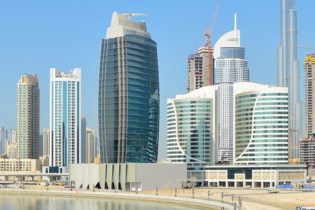Since 2001, emerging markets have become the world’s economic engine.
As companies fiercely compete for market share, professional and trade associations are also seeking to penetrate these rapidly growing economies, with many looking to build and grow chapters by defining locally relevant member value.
India, the Middle East & Africa (IMEA), a region where hyper-growth and huge local investments exist alongside well-documented social and political challenges, is currently leap-frogging ahead in terms of business and innovation, particularly in the countries of the Gulf Cooperation Council (GCC).
Although IMEA has a relatively short history in terms of the association industry, continued economic investment and expanding education is creating a growing desire for professional learning and development.
As governments realise the full potential of associations to support the flourishing business environment, political will teamed with sheer population scale is providing the perfect environment for associations to thrive.
Key country focus
Turkey, the world’s 15th largest economy, a bridge between Europe and Asia and the driving force of the Levant region (including Turkey, Iran and Northern Iraq), is making huge investments in infrastructure. With larger airports and sparkling new convention centres on the horizon, including a new airport in Istanbul with a capacity of 150 million passengers and plans to transform the current airport into a convention centre, the association meetings industry here looks set to flourish.
The African market is an interesting mix of European business fundamentals with the drive and ambition of Asia. South Africa is leading the growth of the association meetings business on the continent, but there are over also over 300 associations based out of Kenya, with its own dynamics and opportunities. Business people in the region don’t talk countries, they talk Africa, so associations have to build this nuance into their business model and ensure a more continent-centric strategy than in other regions.
In terms of the Middle East, the traditional association hubs of North Africa and some Levant countries, such as Morocco, Tunisia, Egypt and Lebanon, are going through major political and economic meltdown. GCC countries are capitalising on this, with the United Arab Emirates and its population of only 5.8 million leading the charge and reinforcing its growing reputation as the Hong Kong of the Middle East. These countries are also focusing on investment in mega projects such as Expo 2020, the Olympics and FIFA World Cup in Qatar, with the UAE’s foreign trade expected to touch Dh4 trillion by hosting Expo 2020.
A 100% tax free environment, re-export hub, developed free zones and strategic location are without a doubt the UAE’s main economic strengths, however, like most GCC countries, international associations cannot be set up as legal entities in the region. For this purpose, a free zone like model was incorporated under the banner of Dubai Association Centre in 2013, enabling international associations to base themselves here and operate independently.
This initiative has opened the door for association expansion in the Gulf region and looks set to turn Dubai into a key global association hub.
PART 2








